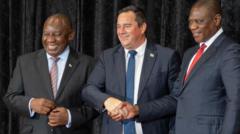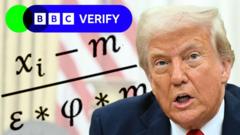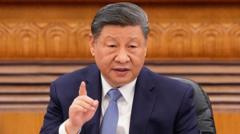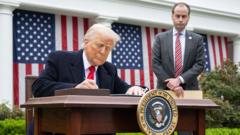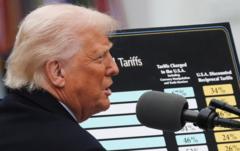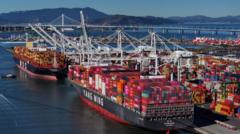While President Trump has been vocal about his plans for tariffs, significant unknowns remain, including the details of the new import taxes, the countries affected, and the economic repercussions that may follow the announcement.
Uncertainty Surrounds Trump's 'Liberation Day' Tariffs: Key Questions Awaiting Answers

Uncertainty Surrounds Trump's 'Liberation Day' Tariffs: Key Questions Awaiting Answers
As President Trump prepares to unveil a sweeping set of tariffs, the business world and international relations hang in suspense over their potential implications.
As anticipation builds ahead of President Donald Trump's announcement of a new set of tariffs dubbed "Liberation Day," the U.S. and global trade landscapes face significant uncertainty. Trump's administration has consistently pushed for increased tariffs, yet details surrounding these new measures remain unclear. Presently, the business community and international allies are grappling with important questions about the nature and extent of these proposed tariffs.
The White House has maintained a level of ambiguity regarding the specific tariffs that will be imposed. In the past, Trump has hinted at various rates, from a potential 10% across-the-board tariff on imports to as much as 60% on particular categories, such as goods from China. Complicating matters, the administration has indicated that tariff rates might not only consider traditional tariffs but also factors like VAT policies in other countries, which could significantly influence how domestic firms and consumers experience these measures.
Countries that might be subjected to tariffs remain a point of contention. Trump has alluded to the possibility of applying tariffs universally, which has disheartened some nations like the United Kingdom that had hoped to sidestep the impending changes. The current focus, as conveyed by officials, zeroes in on a select group of countries labeled the "Dirty 15," whose policies and trade practices the administration believes pose disadvantages to American businesses. The nations identified include traditional allies such as the UK and Canada, making the new tariffs a potential flashpoint in diplomatic relations.
The implications of these tariffs extend beyond simple taxation; they introduce questions about who will bear the ultimate financial burden. While U.S. companies importing goods would initially face the costs, many may attempt to mitigate the effects by adjusting their supply chains or passing on the increased costs to consumers. This reaction could heighten the potential for inflation in the U.S. market, while also raising fears of a broader economic recession both domestically and internationally.
Additionally, Trump's strategy encourages companies to consider relocating or investing in domestic production to avoid tariffs, although this presents its challenges due to costly operational changes. The complexities of currency fluctuations and potential retaliatory actions from affected countries could further complicate the landscape following the tariff announcement.
As all eyes turn to the White House for the impending details, the stakes are high. The outcomes of "Liberation Day" may not only redefine U.S. trade policies but also impact global markets in unpredictable ways, creating an environment of apprehension among businesses and foreign governments alike.




